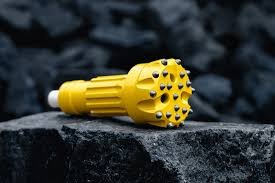When it comes to drilling through tough surfaces like rock, selecting the right drill bit is crucial for efficiency and effectiveness. Rock drill bits are specialized tools designed to withstand the abrasive nature of rock formations while delivering precise and consistent drilling performance. However, with a wide variety of options available in the market, choosing the appropriate rock drill bit can be a daunting task. To ensure you make an informed decision, it’s essential to consider several key factors before making a purchase.
1. Rock Formation
The type of rock you intend to drill through plays a significant role in determining the most suitable drill bit. Rock formations vary in hardness, abrasiveness, and composition, requiring different types of bits for optimal performance. For instance, soft rock formations like sandstone may require a different type of bit compared to hard granite or shale. Understanding the specific characteristics of the rock formation will help you select a drill bit that can effectively penetrate the surface without excessive wear or damage.
2. Bit Design
Rock drill bits come in various designs, each tailored to specific drilling conditions and applications. Common types of bit designs include roller cone bits, fixed cutter bits, and percussion bits. Roller cone bits feature rotating cones with teeth that crush and grind the rock, making them suitable for medium to hard formations. Fixed cutter bits, on the other hand, have blades or cutters that shear through the rock, offering excellent performance in hard formations. Percussion bits, also known as hammer bits, use repeated impacts to break through the rock and are ideal for softer formations. Choosing the right bit design based on the drilling environment is essential for achieving optimal results.
3. Bit Size and Compatibility
Selecting the correct bit size is crucial for ensuring proper fit and compatibility with your drilling equipment. Rock drill bits come in various sizes, typically measured in diameter, to accommodate different drilling rigs and applications. Using an improperly sized bit can lead to inefficiencies, increased wear and tear, and potential damage to both the bit and the drilling equipment. Before purchasing a rock drill bit, ensure that it is compatible with your drilling rig and meets the required specifications for the job at hand.
4. Durability and Material
The durability of a rock drill bit is determined by its construction and the materials used in its manufacturing. High-quality bits are typically made from robust materials such as tungsten carbide or industrial-grade steel, which offer excellent strength, hardness, and resistance to wear. Additionally, some bits may feature specialized coatings or treatments to enhance their durability and performance in challenging drilling conditions. Investing in a durable and well-built rock drill bit can result in longer service life, reduced downtime, and lower overall operating costs.
5. Cost and Value
While cost is undoubtedly a consideration when selecting a rock drill bit, it’s essential to weigh the upfront price against the long-term value and performance benefits. Cheaper bits may seem like a cost-effective option initially, but they often sacrifice quality and durability, leading to higher maintenance costs and shorter service life. On the other hand, investing in a higher-quality bit may require a larger upfront investment but can offer superior performance, reliability, and longevity in the long run. Consider the overall value proposition of the rock drill bit, taking into account factors such as durability, performance, and maintenance requirements, to make an informed purchasing decision.
Conclusion
Choosing the right rock drill bit is essential for achieving efficient and productive drilling operations. By considering factors such as rock formation, bit design, size compatibility, durability, and cost, you can select a bit that meets the specific requirements of your drilling project while delivering optimal performance and value. Remember to conduct thorough research, consult with industry experts, and evaluate your drilling needs carefully to make the best possible choice. With the right rock drill bit in hand, you can tackle even the toughest rock formations with confidence and precision.
For more information and to explore our range of high-quality rock drill bits, visit our website at KL Drill.


















